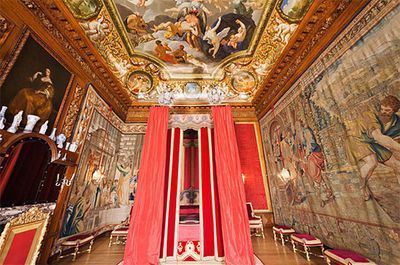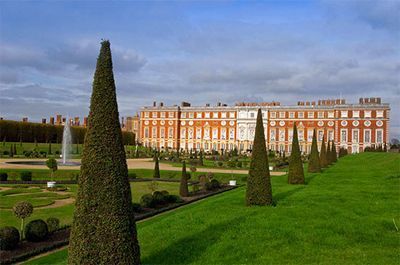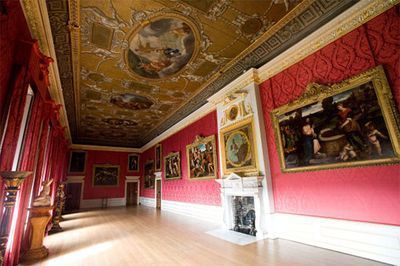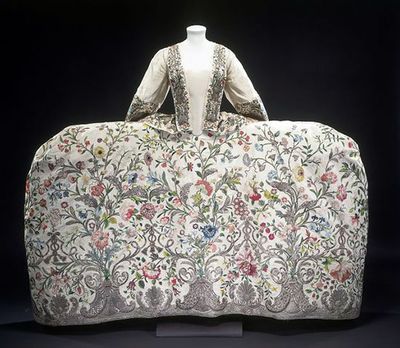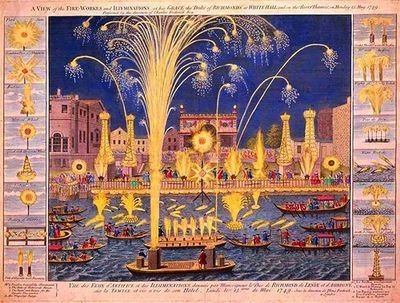Get Georgian: part 1
By MIKA ROSS-SOUTHALL
George I’s behaviour was awful. He locked up his wife Sophia Dorothea in a remote German castle for adultery with a Swedish count, took their children and his mistress to England when he succeeded to the British throne in 1714, and made sure his wife was forever kept away from the family. He would later kidnap his grandchildren from the future George II and his wife Queen Caroline.
These were just a few of the anecdotes about the Georgians related to us by Lucy Worsley (the Chief Curator of Historic Royal Palaces) at a preview of The Glorious Georges, a year-long celebration to mark the 300th anniversary of the Hanoverian accession to the British throne. A season of exhibitions and events will take place at palaces in London and Hanover, where Celle Castle and Herrenhausen Palace will form part of The Hanoverians on Britain's Throne 1714–1837.
George I was an unlikely king – he was fifty-second in line to the throne and fifty-four years old. But his mother was the granddaughter of James I and, more importantly, George was the nearest Protestant. Unremittingly German (he could only speak broken English when he first arrived), and flanked by his mistresses “The Maypole” and “The Elephant”, George told the British that they were “the best-shaped . . . and lovingest people in the world”.
Rivalry between the four Georges (here’s a helpful song to identify them) provided endless entertainment to the British court and the public; not least because George I and his son were always trying to trump each other’s parties. Percy Bysshe Shelley’s polemic sonnet “England in 1819” turns against George III (“old, mad, blind, despis’d, and dying king”) and the Georgian reign (“leech-like to their fainting country cling”). The period defines much of modern Britain and Britishness – such as tea drinking, coffee-houses, newspapers, the birth of consumerism, art galleries and the cult of celebrity – all of which could only be enjoyed by well-to-do, white, Protestant males (some of this is, perhaps, still the case . . . ). Georgians Revealed, a recent exhibition at the British Library, offered a prologue to the anniversary; as Norma Clarke put it in her review for the TLS, “It is acknowledged that Georgian Britain was a kingdom of ‘extremes’, but the poor feature only in parenthesis and the gargantuan wealth of the few is underplayed . . . . In this the exhibition obeys the dictates of Georgian etiquette. The inescapably ‘low’ aspects of life lacked style and were best not noticed”.
Gin, gang culture, addiction and slavery are far from evident on the London leg of the season, too, but each palace has been cleverly curated to represent the king who lived there – Hampton Court Palace focuses on George I, Kensington Palace on George II, and Kew Palace on George III and George IV – as well as the lives of the courtiers; not always as glamorous and refined as I’d thought. George II’s mistress Henrietta Howard wrote in her diary that her rooms in Kensington Palace were so damp she could have grown mushrooms, Tracy Borman, joint curator at Kensington Palace, said. And as we toured the King’s public dining room at Hampton Court, Worsley described the crowds of courtiers as “stinking in abundance”, jostling to get closer to the King and Queen (there will be a “Smell Map” at Hampton Court and Kensington Palace recreating distinct court scents, such as wood smoke and herbs used in the rushing floor to mask body odours). Elaborate white napkin sculptures adorn the tables and a chicken-wire barrier protects the royals from the crowd – just as it did in the eighteenth century. Restored paintings of feasting and food, by artists such as Rubens, hang on the crimson damask silk wallpaper.
The conservation work in the newly opened state apartments of Kensington Palace and Hampton Court is fascinating. Each detail required extensive research and specialist makers, from gold-gilders for the cornices to limewood experts to restore a carving by Grinling Gibbons (known in the 1680s as the “King’s Carver”) that now decorates the fireplace of the Presence Chamber in Kensington Palace.
During the restoration process, the builders found tools, rags, cigarette butts and bottles in attic rooms, left behind from when the palaces were first built and decorated. At Hampton Court they also discovered hand-prints and graffiti by Christopher Wren’s workers, and, on a wall in its restored Chocolate kitchen, you can see a crude pencil sketch of the view up a female courtier’s skirt – probably, Worsley said, drawn by a bored page boy “below stairs” waiting to serve drinking chocolate.
We saw a magnificent mantua made from silk and woven with untarnished silver thread (thought to have been worn only once by Mary, Marchioness of Rockingham when her husband Charles became Prime Minister in 1765) and a pink linen, whalebone hoop (an undergarment used to extend women’s hips at court, usually to a metre wide), both of which will be on display at Kensington Palace. (No doubt these women would have looked otherworldly and elegant, but I imagine they couldn’t do much – there are contemporary descriptions of the ladies at court slowly gliding about as if they were on casters.)
“Revisionists of the revisionists”, Borman explained, now say that the Hanoverians created an environment for culture to thrive, championed by Queen Caroline and her circle of intellectuals (which included Lady Mary Wortley Montagu, Gottfried Liebniz and Sir Isaac Newton). Reviving this spirit, the palaces will be running “salons” with guest speakers debating Georgian and twenty-first century issues.
Many other events are scheduled for the next few months, for example choral anthems, oratorios and chamber music from the Gabrieli Consort and Players; cookery and chocolate-making classes; Georgian “selfies”, if you make it to the centre of Hampton Court’s maze; a performance from a thirty-piece orchestra of George Frideric Handel’s “Music for the Royal Fireworks”, accompanied by a sculptural firework display (recreating the original commission for George II in 1749; see picture, below); and there is also the alluring invitation to learn everything you need to know about the royal “wee” . . . .
Peter Stothard's Blog
- Peter Stothard's profile
- 30 followers


